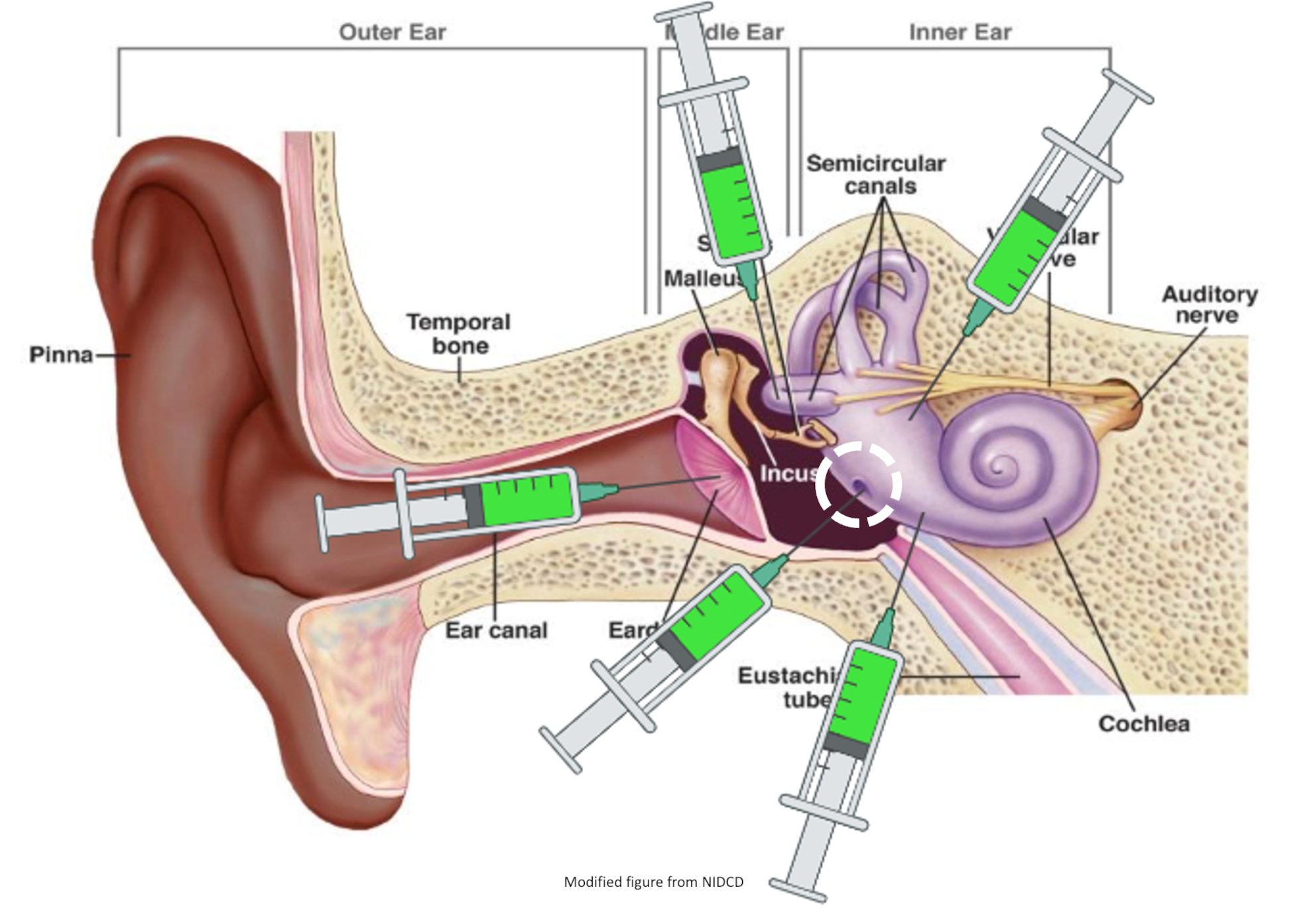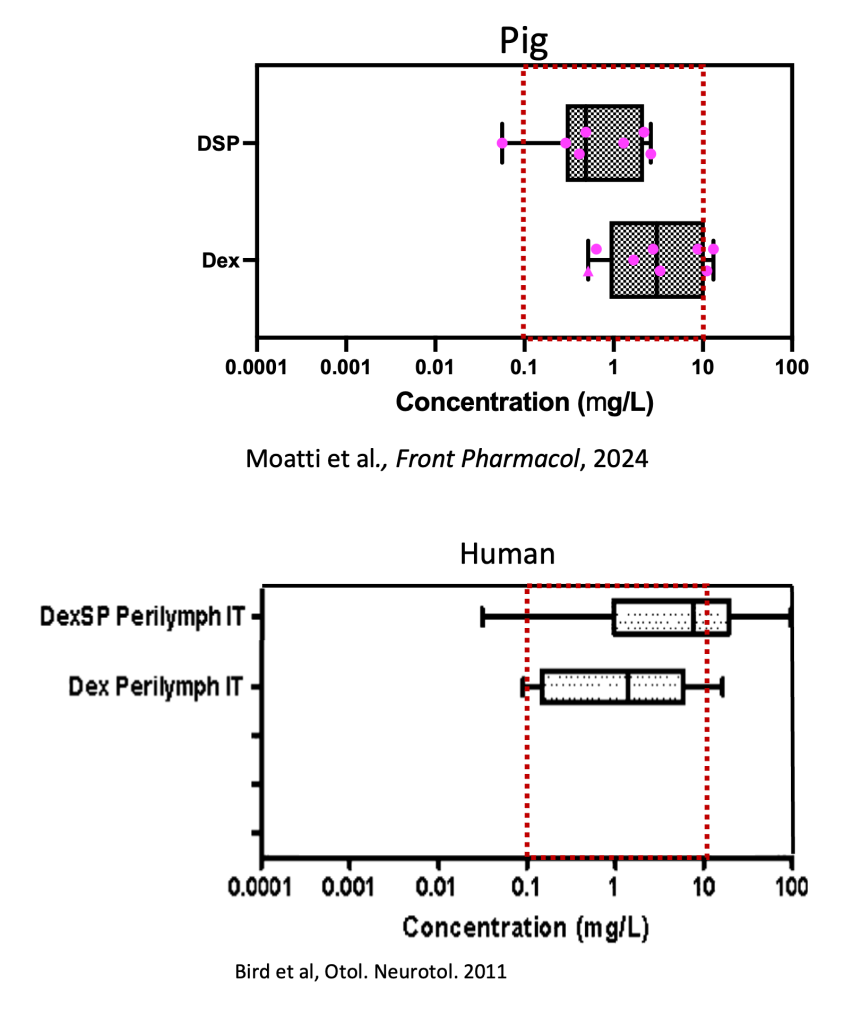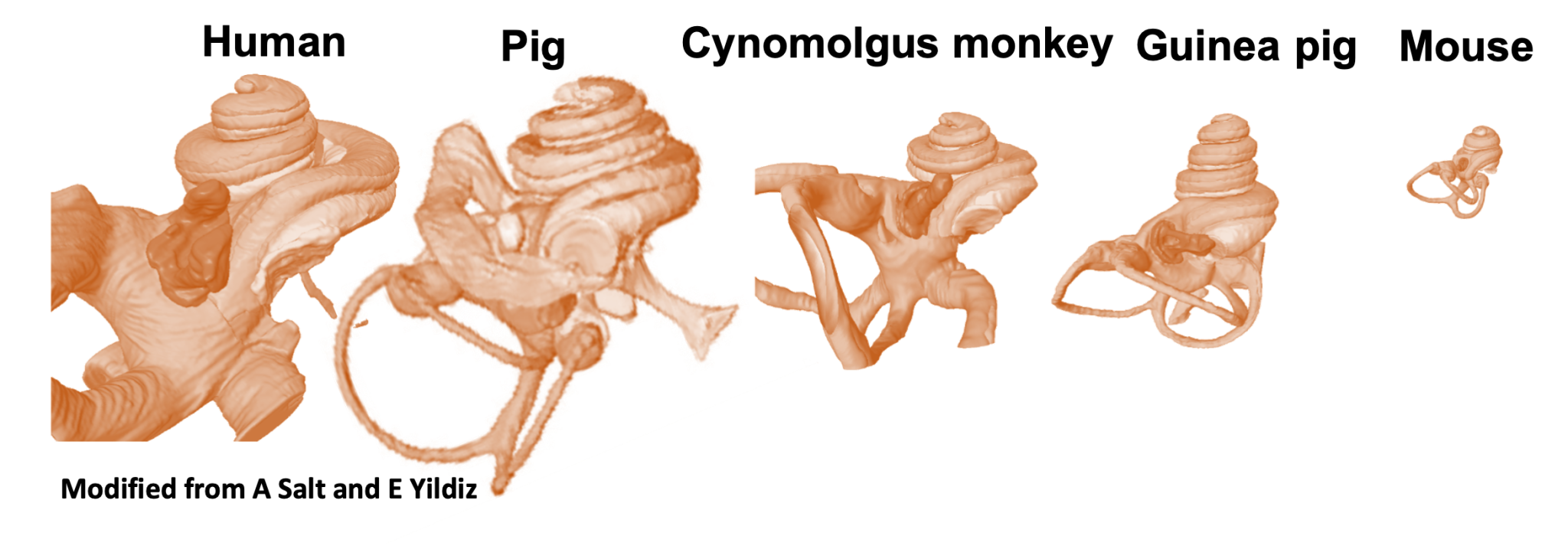Our mission
Our mission is to help safely, reliably, and effectively deliver therapeutics useful for the clinical treatment of hearing loss. Our lab addresses the significant challenges inherent in developing effective inner ear substance delivery systems. One key hurdle involves not knowing the exact drug formulation for which the delivery system is being designed, affecting drug bioavailability and biodistribution. Another obstacle lies in translating promising findings from preclinical studies, conducted on animal models, into applicable solutions for human patients.


Recently the porcine model has emerged as a promising animal model to study inner ear pharmacokinetics and to develop cochlear implants and devices to continuously deliver drugs to the middle ear. The porcine inner ear anatomy, barrier thickness, and auditory frequencies are very similar to those of humans.
- Porcine cochlear characteristics
-
The porcine round window membrane-RWM thickness (∼100 µm) is closer to humans (∼70 µm) than rodents (∼10 μm).
The porcine basilar membrane length (measured from the top of hair cells) of 33.5 ± 5.0 mm (mean ± SD) and its 3.5 turns is also very similar to those of humans, ∼33.5 mm and 2.75 turns, and appears to be closer than other large animal models such as sheep.
The porcine inner and outer hair cells count confirmed to be identical to humans (3,200 ± 300 and 11,500 ± 1,600 (mean ± SD), respectively).
The porcine spiral ganglion neurons count also is much closer to human than other animals like gerbils.
The porcine cochlear developmental stages (∼115 gestation days) in pigs is more similar to humans where the hearing organ is fully mature at birth, unlike mice.
Additionally, the frequency ranges of hearing (32–45,000 Hz) are close to humans.
The successful commercial cochlear implant insertion in porcine cochlea confirms the suitability of this large animal model for otologic studies. However, the narrow and angled conformation of the porcine ear canal makes it challenging to locally deliver drugs to the inner ear. We have developed intratympanic surgical technique in pigs to access the tympanic membrane via transcanal approach which paved the way to explore drug delivery approaches in pigs.
- Developmental stages in pigs
-
E: embryonic day, P: postnatal day


- Comparing pig vs human drug delivery data
-
The Human versus pig intratympanic delivery of dexamethasone sodium phosphate (DSP) is comparable.
4 mg/ml DSP injection
mean (DSP + Dex): 6.3 versus 8.9 µg/mL
Inner ear from different species:

